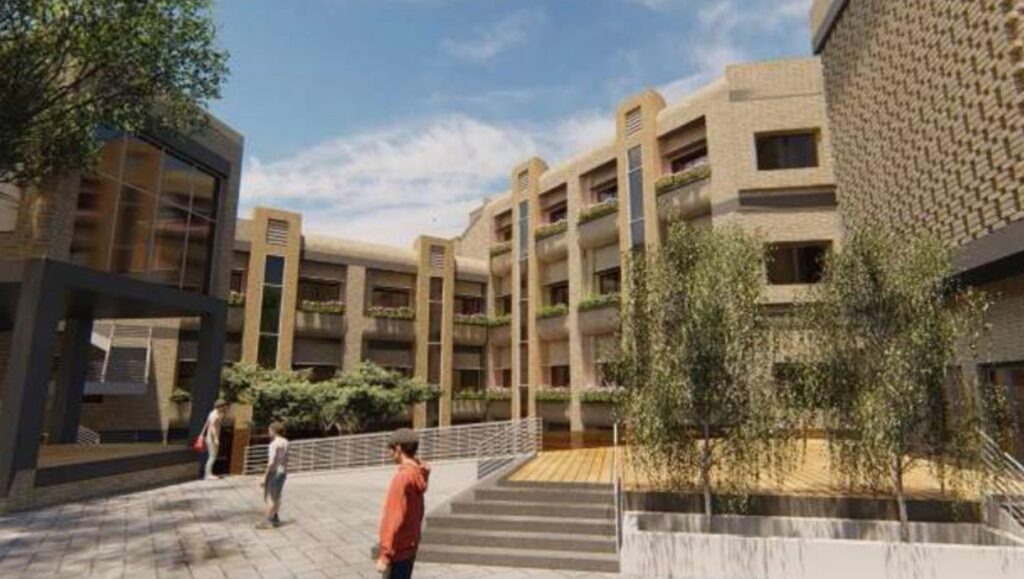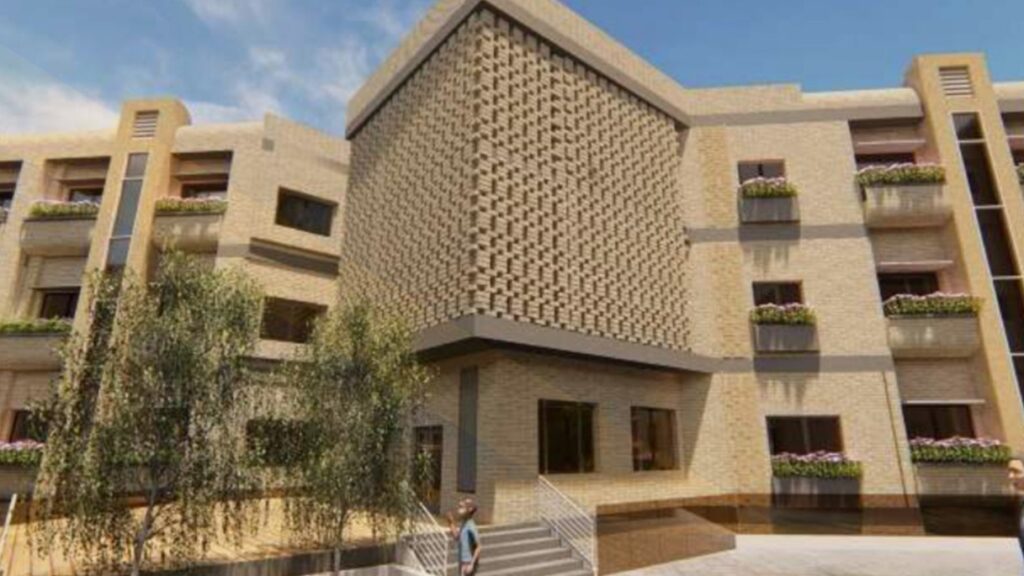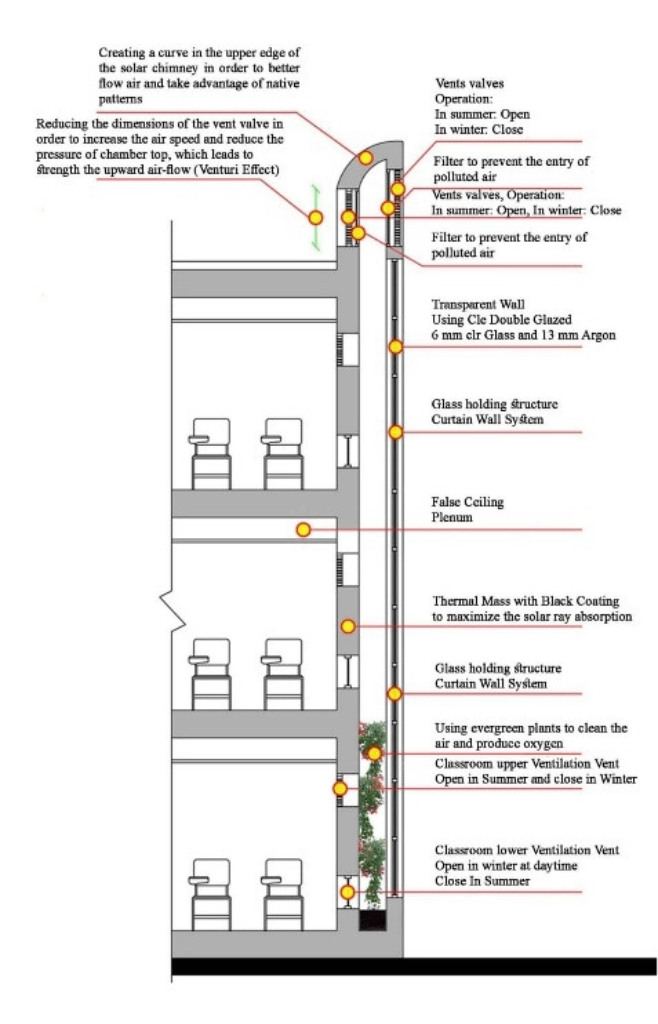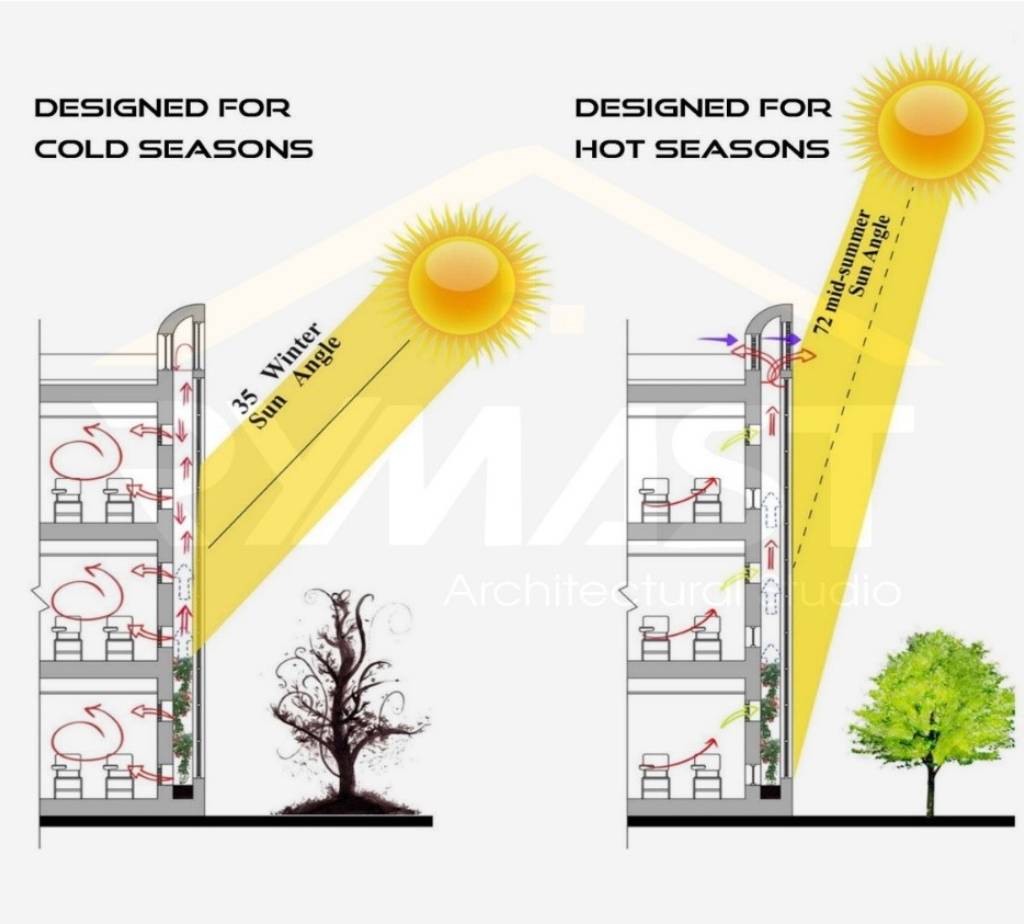
In today’s world, sustainable architecture is no longer just an option; it is a necessity. With increasing environmental crises and rising energy costs, implementing innovative solutions to optimize energy consumption and enhance thermal comfort has become a priority. Among the most effective technologies in this field is the solar chimney, which utilizes natural ventilation principles to improve thermal performance while reducing energy demands in buildings.


A solar chimney is a passive ventilation system that uses solar energy to draw warm air out of a building, facilitating natural airflow and cooling. This system can be effectively used for both cooling in summer and heating in winter, depending on the building’s ventilation needs and climatic conditions.

A solar chimney consists of a vertical structure with transparent and heat-absorbing walls. During the day, solar radiation heats up the air inside the chimney, increasing its temperature. As a result, the hot air rises and exits the chimney due to pressure differences. This creates a vacuum effect, drawing in cooler, fresh air from lower inlets, ensuring natural ventilation while reducing the need for mechanical cooling and heating systems.
In hot climates, the primary focus of solar chimney design is reducing unwanted heat gain and enhancing ventilation efficiency. Key design elements include:
In colder seasons, the goal is to trap heat and enhance energy efficiency. The solar chimney contributes to heating the building through:

A solar chimney utilizes natural ventilation to facilitate the movement of warm air, reducing the need for mechanical heating and cooling systems. This significantly lowers energy consumption while maintaining indoor comfort.
solar chimneys can be used in both hot and cold climates. In warm regions, they enhance natural cooling by expelling hot air. In colder climates, they help retain heat inside by improving air circulation and preventing heat loss.
One of the key benefits of solar chimneys is their low maintenance. Since they do not contain mechanical components, maintenance costs are minimal. However, periodic cleaning of the chimney’s surface is recommended to maintain optimal performance.
Although solar chimneys rely on solar radiation, some ventilation still occurs even on cloudy days. Additionally, the system can be designed with thermal mass materials to store heat and maintain airflow efficiency during less sunny periods.
Solar chimneys represent an efficient and sustainable approach to natural ventilation in architecture, playing a crucial role in reducing energy consumption and enhancing indoor comfort. Thoughtful design tailored to specific climate conditions improves energy efficiency, optimizes air circulation, and lowers operational costs. Integrating this technology into modern architectural projects reflects a commitment to sustainable design and contributes to the development of smarter, greener buildings for the future.
Sustainable architecture is shaping a smarter, more eco-friendly tomorrow.
Do you need advice for your architectural project?
Fill out the form below and our experts will contact you as soon as possible and provide the best solutions for your project.
© 2025 | All rights reserved to Rymast Studio.
Copyright © 2025 Rymast.com

در صورت داشتن هرگونه سوال، با ما در تماس باشید …

If you have any questions, feel free to contact us.
Adding {{itemName}} to cart
Added {{itemName}} to cart